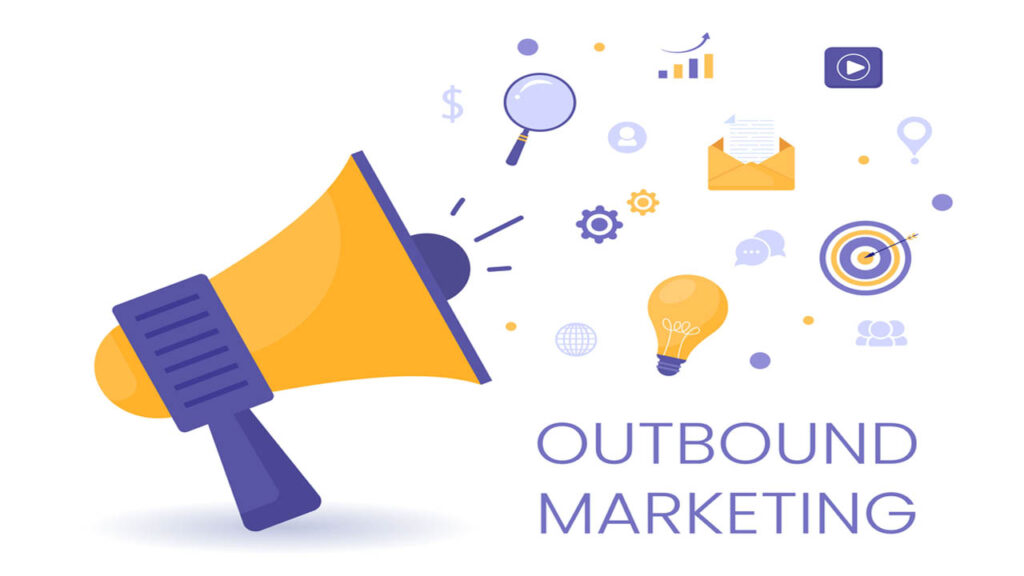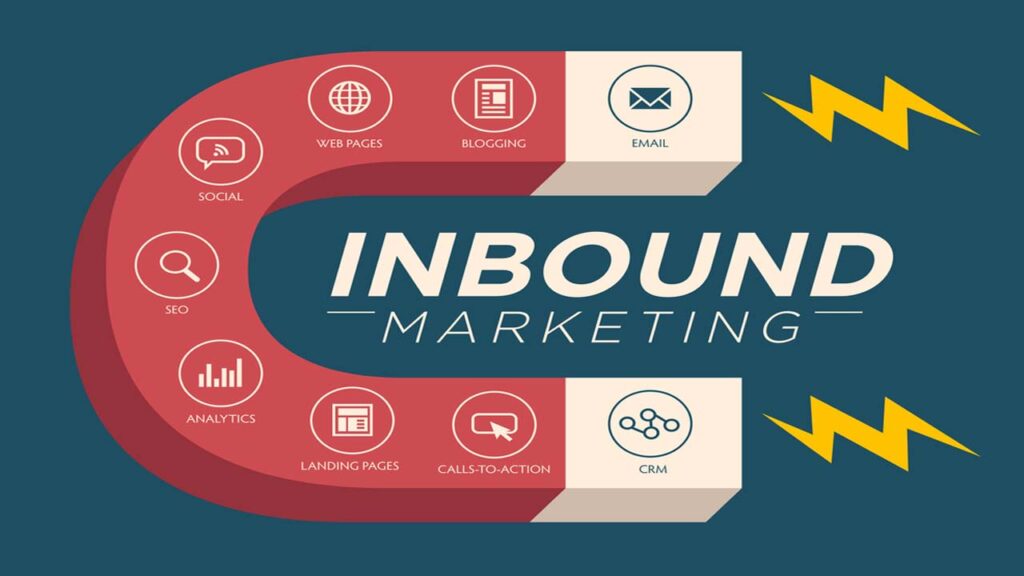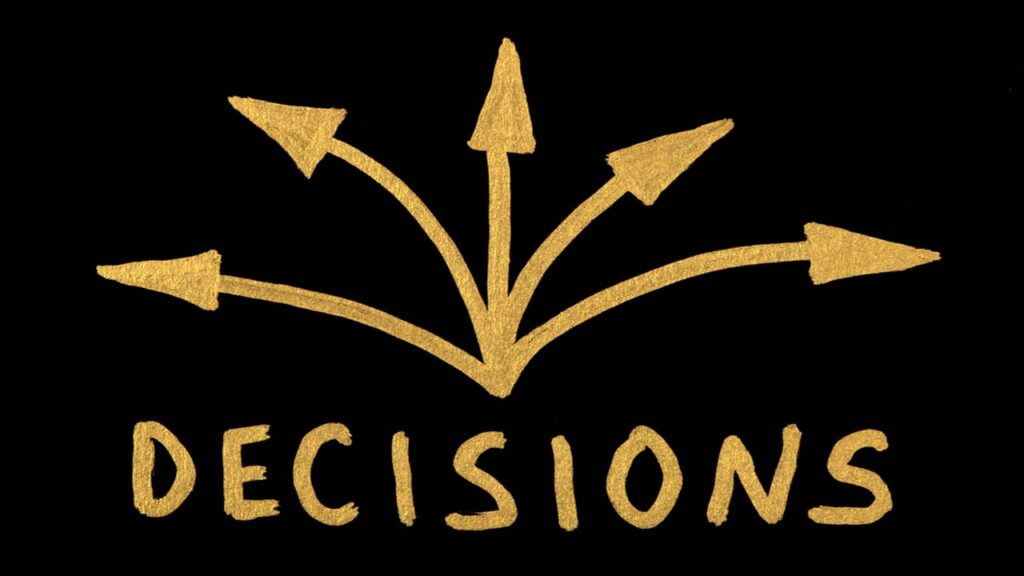Exploring Outbound vs Inbound Marketing: Key Strategies and Comparisons
Brett Lewis
Digital Marketing - July 8, 2024

Choosing the right marketing strategy for your business can be daunting. Do you invest in outbound marketing and reach out to a wide audience, or do you focus on inbound marketing and attract customers with engaging content? This article breaks down outbound vs inbound marketing, their effectiveness, and how to decide which one suits your unique business needs.
Key Takeaways
- Outbound marketing focuses on proactively reaching a broad audience through traditional and digital channels like TV ads and display ads, while inbound marketing attracts and engages customers through valuable content tailored to their interests and behaviors.
- While outbound marketing is typically faster in generating immediate results and can target a larger audience, inbound marketing is generally more cost-effective and focuses on nurturing long-term customer relationships through meaningful and relevant content.
- A comprehensive marketing strategy often integrates both outbound and inbound methods, using a blend of traditional and digital tactics to maximize audience reach and create a unified marketing funnel that aligns with business goals and objectives.
Understanding the Core of Outbound Marketing

Outbound marketing, often referred to as traditional marketing, is all about proactive outreach. This method seeks to push messages out to potential customers through various channels, with the primary intent of promoting brand awareness and generating immediate results by broadcasting to a broad audience.
Let’s unravel what this entails by investigating the core aspects of outbound strategies and examining their influence.
The Fundamentals of Outbound Strategies
Outbound marketing, including outbound marketing efforts like cold calling, cold emailing, direct mail, and various forms of advertisements, is like the outgoing friend who never misses a chance to start a conversation.
This proactive approach gets the brand in front of prospects, making use of varied means such as billboards, TV ads, and other similar methods. But how effective is this? Interestingly, companies utilizing cold calling experience a 42% higher growth rate than those that do not. However, the success of outbound marketing heavily relies on how well the messages are tailored to the audience.
To differentiate oneself from the deluge of sales messages buyers encounter, segmentation and personalization become paramount.
Outbound Techniques and Their Impact
Outbound marketing is not just about traditional tactics like TV ads and billboards. The company also utilizes digital strategies such as:
- display ads
- cold calling
- banner ads
- pop-ups
- email marketing
These methods help to create a comprehensive approach to reaching potential customers online. Despite the digital era, traditional marketing methods, such as print and broadcast ads, are still viewed as trustworthy by certain audience segments. However, outbound marketing does face challenges such as banner blindness and the growing prevalence of ad blockers due to oversaturation of online ads. Despite these hurdles, investments in display ads and Out-of-Home advertising are forecasted to grow, suggesting evolution rather than obsolescence.
We can see successful implementations of outbound marketing in real-world scenarios too. For instance, a scooter manufacturer leveraged paid traffic through platforms like Google Ads, Microsoft Ads, and Amazon Ads, successfully penetrating a new market and generating nearly $1,000,000 in sales.
Delving into Inbound Marketing

If outbound marketing is the outspoken, proactive friend, then inbound marketing is the thoughtful and insightful one. Inbound marketing focuses on attracting customers through valuable content creation and nurturing a relationship with the target audience. It’s all about using content to pull in an audience and address their needs throughout the buying journey. Inbound marketing leverages tools such as blog posts, infographics, email newsletters, and social media interaction to engage the target audience. But it’s not all smooth sailing. Challenges such as content saturation, longer times to see results, and changing search algorithms can pose hurdles. However, these can be addressed by producing unique high-quality content, being patient, and staying updated on SEO best practices.
Moving forward, we’ll unearth the specific tactics employed in inbound marketing and highlight the significance of constructing content for customer engagement.
Inbound Tactics for Engaging Prospective Customers
Inbound marketing is all about drawing interested traffic. It involves creating tailored inbound marketing content like blog posts, engaging through social media, and nurturing leads with opt-in email flows. To engage successfully, gathering data on audience behavior is critical as it paves the way for continuous optimization of campaigns to bolster conversion rates. Implementing a well-planned inbound marketing strategy, which includes effective inbound marketing tactics, can make all the difference in achieving your goals.
Successful inbound marketing doesn’t happen in a vacuum – it uses a variety of channels and tools. These include:
- Social media pages
- Podcasts
- Webinars
- Platforms like HubSpot, GA4, WordPress, and Mailchimp to engage and retain customers.
Crafting Content for Customer Engagement
The creation and development of high-quality content serves as the cornerstone of inbound marketing success. This content, combined with the application of SEO, increases organic search visibility and draws in the target audience. Content forms such as:
- blogs
- infographics
- videos
- podcasts
- seminars
- eBooks
- case studies
are integral to inbound marketing, providing valuable information to the target audience.
Maintaining customer engagement and nurturing brand loyalty necessitate the production of consistent, quality content, interaction with audiences across various channels, and capitalizing on word-of-mouth marketing, potentially leading to a 30% boost in average conversion rate from referrals.
Comparing Inbound and Outbound Approaches

After exploring the individual aspects of inbound and outbound marketing, let’s pit them against each other. Both approaches have their unique characteristics and advantages. Inbound marketing, known as pull marketing, draws customers in by aligning content with their interests, primarily focusing on the online realm. On the other hand, outbound marketing is known as push marketing because it pushes information to consumers, utilizing both offline and online tactics.
Inbound marketing focuses on identifying potential customers by understanding their interests or pain points, while outbound marketing involves placing the message in front of potential customers. These two approaches differ fundamentally in their methods of targeting and engaging audiences. To probe these differences further, we’ll examine inbound vs outbound marketing in terms of audience targeting and strategy effectiveness in the subsequent sections.
Audience Targeting: Inbound vs Outbound
When it comes to audience targeting, inbound and outbound marketing take different routes. Inbound marketing focuses on a specific audience tailored to behavioral insights and preferences. Outbound marketing, on the other hand, typically aims to reach a broader audience through various channels, regardless of whether they are currently looking for the product or service. This means that consumers targeted by outbound marketing may not be aware of or actively seeking the product being advertised.
However, certain customer segments do have a comfort and familiarity with traditional advertising channels like radio, billboards, and TV commercials, making outbound marketing still relevant and effective.
Strategy Effectiveness: Push vs Pull Marketing
When we talk about strategy effectiveness in terms of push and pull marketing, we need to consider aspects like cost-efficiency and reach. Inbound marketing leads can be around 60% cheaper than outbound leads, indicating a significant difference in cost-efficiency between these two strategies. On the other hand, outbound marketing has the ability to reach a larger audience but may incur higher costs and the possibility of a negative brand perception among non-interested consumers. This underscores the significance of monitoring metrics like conversion rates and website traffic, which are vital for assessing the effectiveness of a business’s marketing investments.
Blending Inbound and Outbound for a Comprehensive Marketing Strategy

Having explored inbound and outbound marketing independently, let’s now look at how these two strategies can be combined for a comprehensive marketing strategy. Integrated marketing incorporates both inbound and outbound methods to ensure a consistent and cohesive brand message. This combination is often relied upon in modern strategies to accelerate a brand’s success by adapting to market demands and audience behaviors.
But what’s the secret to effectively amalgamating these two strategies? We’ll uncover that in the ensuing sections.
Synergizing Traditional and Digital Methods
An effective marketing strategy doesn’t just stick to one approach – it synergizes. This involves integrating traditional and digital marketing, which allows for comprehensive market coverage and enhances audience engagement. Outbound sales have evolved to include digital avenues such as emails and social media campaigns, accommodating the shift in consumer interaction.
A great example of this synergy is Nike, which blends high-profile traditional ad campaigns with compelling online content. This integration is imperative to fully engage with the market, as relying solely on one method leaves potential outreach untapped.
Creating a Unified Marketing Funnel
To fully reap the benefits of integrating inbound and outbound marketing strategies, creating a unified sales funnel becomes pivotal. This involves:
- Integrating insights provided by digital marketing campaigns into the content strategy for traditional marketing efforts
- Leveraging data analytics and measurable outcomes from digital marketing to tailor traditional marketing materials
- Ensuring that campaigns are responsive to real-time feedback
An effective marketing strategy serves as an extension of the company’s business plan, guiding marketing initiatives designed to meet business objectives. The inbound marketing methodology, with stages of attracting customers, engaging them, and delighting them, forms critical components of a unified marketing funnel.
Inbound or Outbound Marketing: Choosing What’s Best for Your Business

If you’re still wondering whether to choose inbound or outbound marketing, the answer isn’t a simple one. The best approach depends on various factors including:
- Business goals
- Customer base and location
- The nature of your product/service offering
- Available creative resources
- Budget constraints
Assessing marketing activities in light of specific goals like revenue generation, lead acquisition, and customer retention rates is pivotal to selecting the right marketing strategy. For instance, outbound sales tactics play a pivotal role for startups by creating immediate opportunities, establishing a customer base, and driving fast-paced revenue.
In order to aid you in making a more informed decision, we’ll delve into evaluating your marketing requirements and objectives along with contemplation of budget and resources.
Assessing Your Marketing Needs and Goals
Evaluating your marketing needs and objectives forms a crucial step in the selection of an apt marketing strategy. This involves establishing concrete and measurable marketing goals that are specific, attainable, realistic, and time-driven. An effective marketing assessment includes a review of existing marketing and sales processes and activities to determine their alignment with the company’s goals.
A business’s marketing budget should be informed by its overall business strategy, and should include objectives for the coming months and years, and an action plan for achieving them.
Considering Budget and Resources
Taking into account budget and resources emerges as another crucial factor in deciding upon your marketing strategy. Outbound marketing can be notably costlier than inbound marketing, with challenges in measuring its wider reach and return on investment effectively. To manage their marketing budget effectively, companies must accurately record expenses across various categories, including:
- ads
- personnel
- events
- collaterals
Adopting the 70-20-10 rule for marketing budgets can help companies balance between proven strategies, promising experiments, and novel initiatives.
Real-World Examples: Inbound and Outbound Success Stories
Having analyzed the theoretical aspects of inbound and outbound marketing, it’s time to contextualize these concepts in real-world scenarios. Several brands have leveraged the power of both inbound and outbound marketing to drive their growth and reach new heights. These success stories offer valuable insights for businesses on how to effectively apply inbound and outbound marketing strategies.
Impactful Inbound Campaigns
The impact of inbound marketing is evident in the success stories of brands like Twenty20 and Groove. Twenty20 saw a 400% increase in website traffic and over a 1600% rise in free-trial user submissions through a customized all-digital inbound marketing approach. Meanwhile, Groove’s blog offers business-insider advice and entrepreneurship tips, expanding its readership and showcasing the company’s inbound marketing acumen.
These examples illustrate the power of content creation, SEO, and audience engagement in driving growth.
Outbound Successes Across Industries
On the other hand, outbound marketing successes underscore the continued relevance of traditional marketing methods. Companies like Nike, Coca-Cola, Dove, and Airbnb have implemented outbound marketing campaigns with significant success. These brands have reached diverse audiences through various channels, demonstrating that outbound marketing, when executed well, can be a powerful tool in a marketer’s arsenal.
Summary
In summary, both inbound and outbound marketing serve specific purposes and play important roles in a comprehensive marketing strategy. Inbound marketing focuses on attracting customers through valuable content creation and nurturing a relationship with the target audience, while outbound marketing pushes messages out to potential customers through various channels. The choice between these strategies depends on various factors including business goals, customer base and location, the nature of your product/service offering, available creative resources, and budget constraints.
Frequently Asked Questions
What is the primary difference between inbound and outbound marketing?
The primary difference between inbound and outbound marketing is that inbound focuses on attracting customers through valuable content creation, while outbound pushes messages out to potential customers.
How can outbound marketing be effective despite the rise of digital marketing?
Outbound marketing can still be effective by reaching a broader audience and remaining relevant, especially among customer segments that trust traditional advertising channels.
What are some examples of successful inbound marketing campaigns?
Successful inbound marketing campaigns include those by brands like Twenty20 and Groove, which utilized customized all-digital marketing approaches and business-insider advice blogs to achieve their goals.
How can a business choose between inbound and outbound marketing?
A business can choose between inbound and outbound marketing by considering factors such as business goals, customer base and location, product/service offering, creative resources, and budget constraints. These elements will help determine the most suitable approach for reaching and engaging with the target audience.
Can inbound and outbound marketing be combined in a strategy?
Yes, combining inbound and outbound marketing methods can create a cohesive brand message and adapt to market demands. It’s a common approach for a comprehensive marketing strategy.
